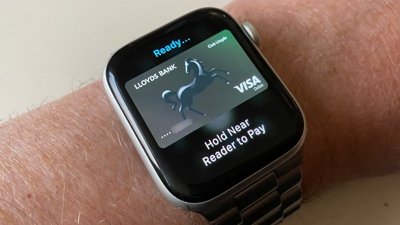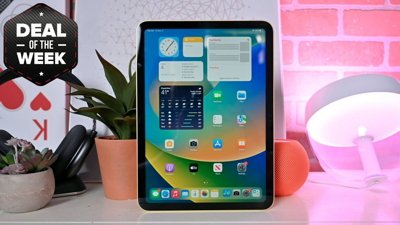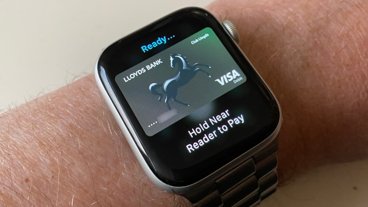An uptick in mobile web usage by iOS devices, matched by an even greater decline in Android web traffic since November, is calling into question figures from IDC that reported an apparent, significant slippage by Apple in global tablet market share.
As noted in a report by Philip Elmer-Dewitt of Fortune, web statistics by Net Applications indicate that iOS users have actually increased their web presence over the winter quarter, alongside the release of the new iPhone 5 and iPad mini.
In contrast, Android's collective representation on the web has declined significantly by 13 percent since hitting a peak of 28 percent of mobile web traffic in November; for January, the figure is now at 24.5 percent. In contrast, Apple's iOS represents more than 60 percent of mobile web traffic.
The fact that iOS is more than twice as popular on the web as all Android devices combined calls into question market statistics by research firms such as IDC, which recently stated that Apple's share of the tablet market had fallen to 43.6% of worldwide tablet sales. That report was presented by Adrian Covert of CNNMoney to state that "Android is the new king of tablet market share."
Reconciling minority sales with majority usage
Given that web browsing is a primary function of mobile devices, how it is that Android, repeatedly reported by its fans to have an edge in both sales and installed base of users and devices, is showing up with just 40 percent of global mobile web usage of iOS?
One explanation is that IDC isn't really tracking tablet sales. It's compiling estimated shipments of devices into the channel. Outside of Apple, few tablet vendors are reporting their actual sales or even their overall shipments. Neither Amazon nor Samsung, for example, report their quarterly tablet shipments or sales. IDC makes some educated guesses. But the real issue isn't the accuracy of IDC's estimations; it's the legitimacy of conflating shipments with sales.
The real issue isn't the accuracy of IDC's estimations; it's the legitimacy of conflating shipments with sales.
For Apple, iPad shipments were the same as its sales in the winter quarter. The company reported that it "began and ended the quarter with about 3.4 million iPads in channel inventory." Those devices in inventory aren't counted as a sale; they are sitting on Apple's retail partners' shelves and warehouses. Constrained supplies of iPads in the quarter mean that if Apple could have produced more, it likely could have sold more, too.
For other companies, however, shipments do not equal sales. If a company ships more inventory than it actually sells, it exits the quarter with a net gain of channel inventory. This does not contribute to product sales or usage. It is, however, counted by IDC in its "shipment" numbers and figures into the firm's calculations of tablet market size and each vendor's market share, even though unsold inventory does not expand the true size of the market.
This winter, Microsoft reportedly shipped 1.25 million Surface RT units into the channel, according to IHS iSuppli. Sales out of the channel "were significantly lower, maybe on the order of 55 to 60 percent of that figure," Rhoda Alexander of IHS told CNET. That comes out to real sales of "roughly 680,000 and 750,000." On top of that, Alexander noted that "return rates were high."
The way IDC reports market share by "shipments," Microsoft would have earned almost twice as much credit for each sale compared to each iPad Apple sells. Additionally, Apple's "share of the market" is also reduced by excessive stock of products that aren't selling and therefore don't represent "the market" at all.
As a side note, IDC actually estimated that Microsoft shipped "just under 900,000" Surface RT tablets in the quarter, or about three quarters as much as iSuppli estimated. If iSuppli's sell through rates are correct, that would mean Microsoft may actually have sold fewer than 500,000 units in the quarter, even before considering return rates. So there's a vast discrepancy between reported shipments and what is actually selling and being used by consumers.
There's a vast discrepancy between reported shipments and what is actually selling and being used by consumers
Reporting market share by inventory shipments into the channel is wildly misleading, particularly because the only point of reporting "market share" is to determine what company's products are the most popular. Counting market share by shipments is like predicting the results of an election by counting the number of ballots that were printed rather than the number of votes that were cast.
Samsung similarly created a big ripple in tablet market share at the end of 2010 when it dumped millions of Android 2.2 tablets into the channel, very few of which were actually sold (as was later revealed in confidential sales reports in the Apple v. Samsung trial). Despite this, it was reported at the time to have taken significant "market share" from Apple, "gains" that were similarly not reflected in web usage (or app sales) because they were not real.
Apple's inventory channel is bigger than any Android tablet competitor
To illustrate how deceptive IDC's shipment-based market share numbers are, consider that Apple's iPad sales are now so vast the the global channel inventory levels Apple must now maintain is larger than the sales of any Android competitor.
Every quarter, the company notes that it seeks to maintain 4-6 weeks of channel inventory for each hardware product it sells. If Apple can't make enough of a particular device to both meet demand and stock the shelves of its channel partners with inventory, channel numbers come in low, as occured in the past quarter for both iPads and Macs.
In the most recent winter quarter, Apple reported selling 22.9 million iPads, amounting to 1.7 million iPads per week, up from 1.1 million per week in last year's winter quarter. Maintaining 4-6 weeks of inventory would mean the iPad maker would liked to have entered 2013 with 6.8 million to 10.2 million iPads shipped, unsold, siting on its retailer's shelves for purchase.
However, iPads sold so quickly that Apple's global inventory was left rather bare. There was plenty of room for another nearly 7 million more iPads in the channel before Apple's relatively conservative inventory maintenance levels would be considered full. (Apple once maintained as much as ten weeks of inventory for its Macs, something that actually contributed to inefficient operational problems).
According to IDC's own numbers, the shelves of Apple's channel partners at the beginning of 2013 had enough room to comfortably accommodate as many tablets as IDC said Samsung shipped in the entire winter quarter. It's an inventory deficit as big as all the tablets shipped by Amazon and Barnes & Noble combined, or more than twice as large as ASUS' record tablet shipments.
The shelves of Apple's channel partners at the beginning of 2013 had enough room to comfortably accommodate as many tablets as IDC said Samsung shipped in the entire winter quarter.
If Apple had pumped out 7 million additional iPads, IDC would have counted that unsold inventory as "market share," even if none of it had actually sold, the same way the firm counts every other unsold shipment on the Android side. That alone would have been enough to give Apple majority market share in "shipments," according to IDC methodology, but all that extra inventory wouldn't have made any difference on the number of actual iPads in use.
Conversely, if IDC only counted true sales of tablets to end users in calculating market share, it would have an even bigger change to its reported numbers that would favor Apple even more. It would have resulted in numbers far closer to the actual real world figures evident in web statistics and app sales, which clearly indicate that iOS is being put to work more by its end users.
 Daniel Eran Dilger
Daniel Eran Dilger













 William Gallagher
William Gallagher


 Christine McKee
Christine McKee
 AppleInsider Staff
AppleInsider Staff
 Chip Loder
Chip Loder

 Malcolm Owen
Malcolm Owen







131 Comments
You'd think this would have come up, I don't know, over a year ago when it first started being reported.
I don't understand why they're allowed to just go on like this without having an actual investigation.
It's been a long standing practice of companies like Samescum to report shipment numbers, but fudge the sales figures. There's a warehouse somewhere filled with product, in order to distort the market in an attempt to hijack the competitive edge from its rivals. As they do with high subsidies, just to undermine the opposition product. Someone needs to call them out on this, and sanctions must be applied, as its akin to insider trading. Who in their right mind would support a company that thinks so evil, it'll do anything to crush its opponents. You only have to read this to get an insight into that evil mind. http://www.kernelmag.com/features/report/3028/samsung-power-corruption-and-lies/
Perception of greater market share surely sways potential buyers in believing popularity of the device must count for something, or at least be on a shortlist.
One problem here--- Apple does count and report shipments to channel partners as "sales." That's standard accounting practice as the risk has transferred from the vendor to the reseller. Apple counts those as sales, because they are in fact, sales, to the reseller. Apple gives the change in channel inventory on its calls, so taking the units sales reported and subtracting net change in channel inventory gives the actual units sold to end-users or "sell-through." The difference with Samsung is they stuff the channel then use discounting or buy back unsold units. Apple keeps shipments roughly inline with sell-through.
This could simply indicate that iOS users surf the web more than users of other platforms. For example, up to now I doubt Blackberry was a decent device to surf the web.?